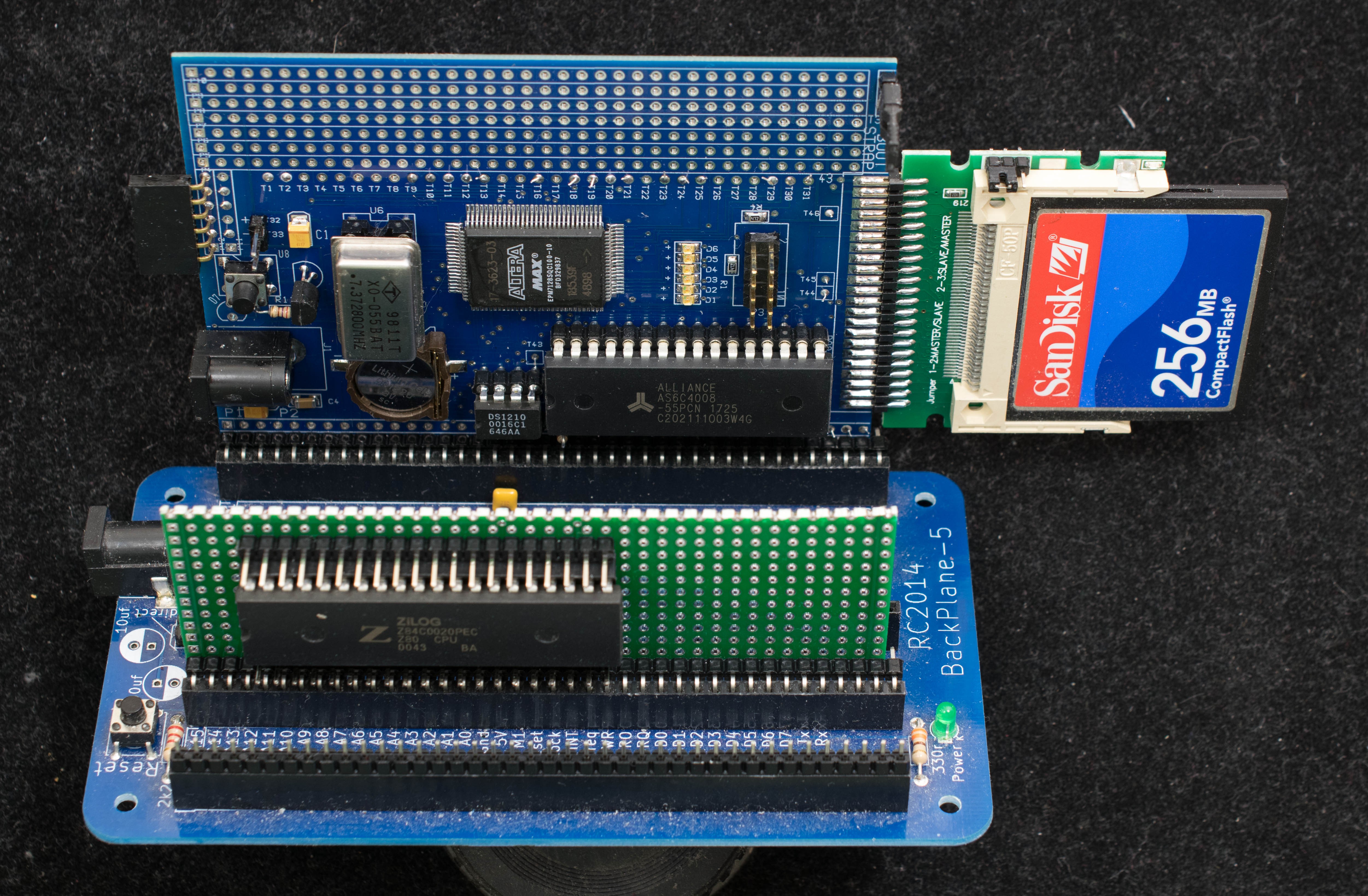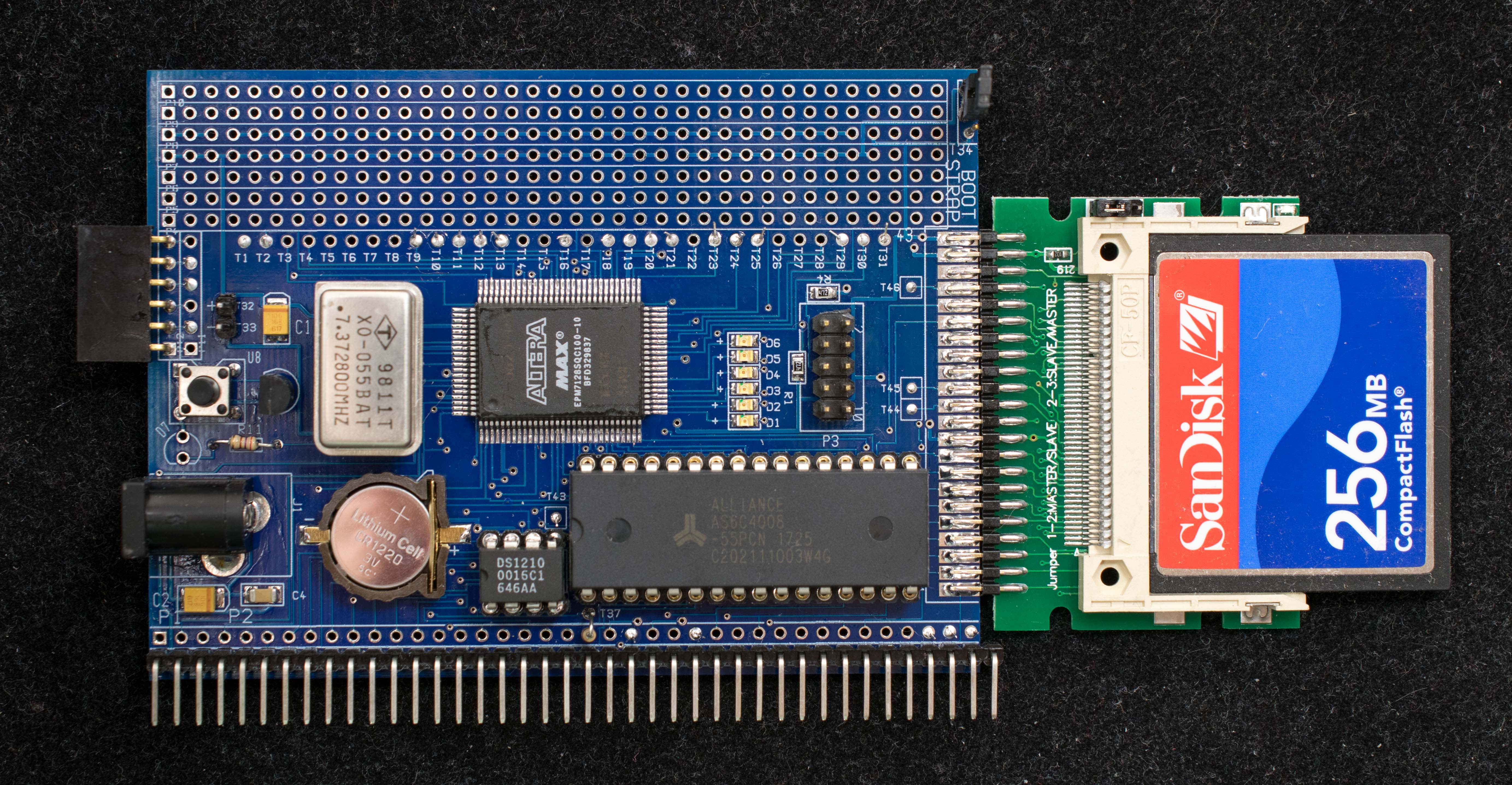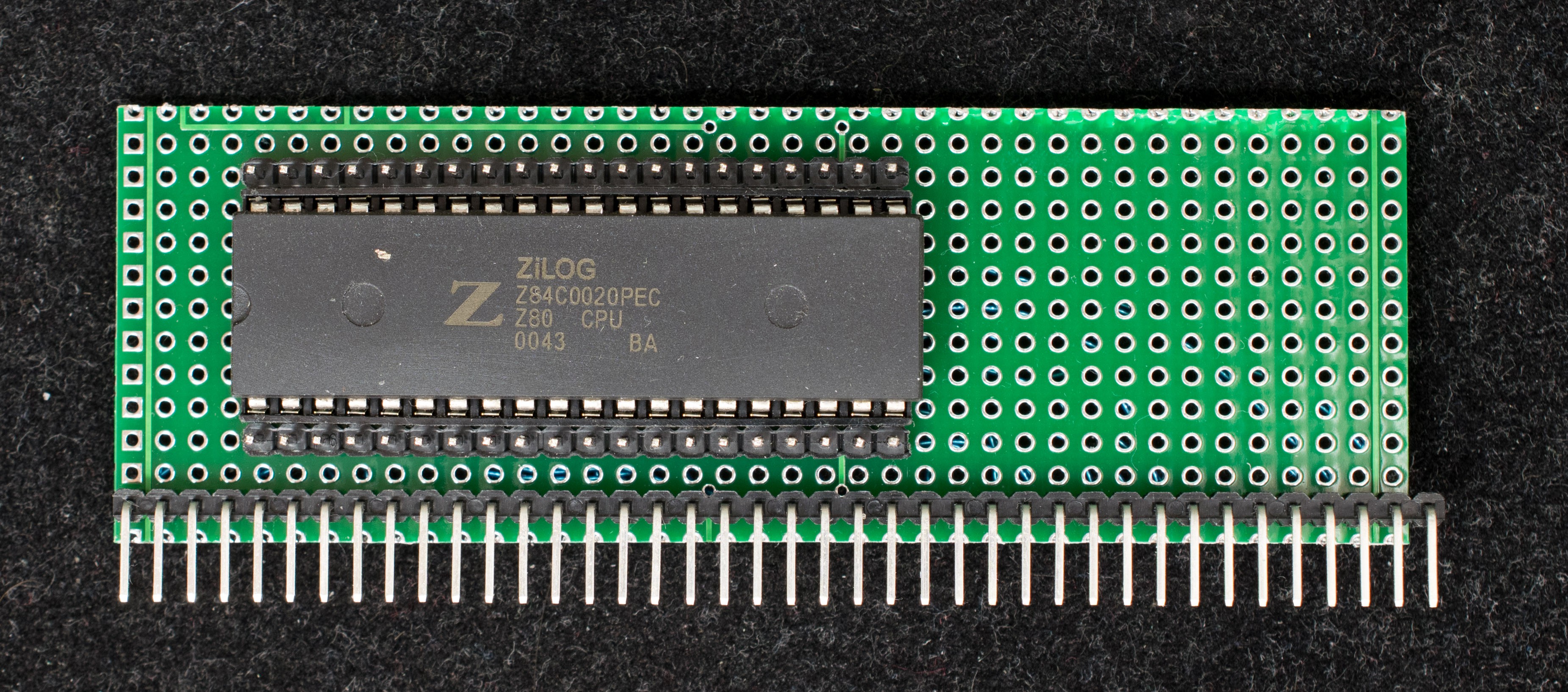G8PP board with processor in its prototype area works well with Z80 and I expect it to work just as well with other 40-pin or 48-pin CPU. However, the prospect of having to manually wire 40+ connections for every processor is unpleasant. A better configuration is having two boards plug into a backplane. Ideally, the G8PP should not be modified physically except the CPLD reprogrammed for different processors. The specific processor is a separate board that plugs into a backplane along with G8PP. The backplane also has additional slots for expansion. The picture below illustrates this concept.

The G8PP+CPU concept is now a two-board system: G8PP in baseline configuration consists of clock, RAM, CF interface, and CPLD. The CPLD can be reprogrammed in-situ to accommodate different processors. No additional manual connections are needed when change processors. The G8PP baseline becomes a pc board without myriad of jumper options. This is the schematic of the G8PP baseline

The CPU board is a simple pc board with pre-defined addresses, data, clock, power, and reset pin assignments same as RC2014, and few processor-specific control signals unique to the particular processor. The prototype CPU board in the picture is hand wired, but it can easily converted to a pc board. This is the schematic of the Z80 processor board.


The resulting 2-board system work just like the single-board version described in Part 2. All software that run in the single-board version also run in the two-board system.
 Plasmode
Plasmode
Discussions
Become a Hackaday.io Member
Create an account to leave a comment. Already have an account? Log In.
For 6809 and 6502 where the reset vector is located at the top of the memory, the CPLD equations are modified so the upper address byte, A15 to A8, are forced to 0xFF in the bootstrap mode. This way the 256 bytes of data received by the serial port is write to 0xFF00 to 0xFFFF. So yes, it does work with processors that do not reset to 0x0000
Are you sure? yes | no
Does this work with processors that do not reset to 0x0000?
Are you sure? yes | no